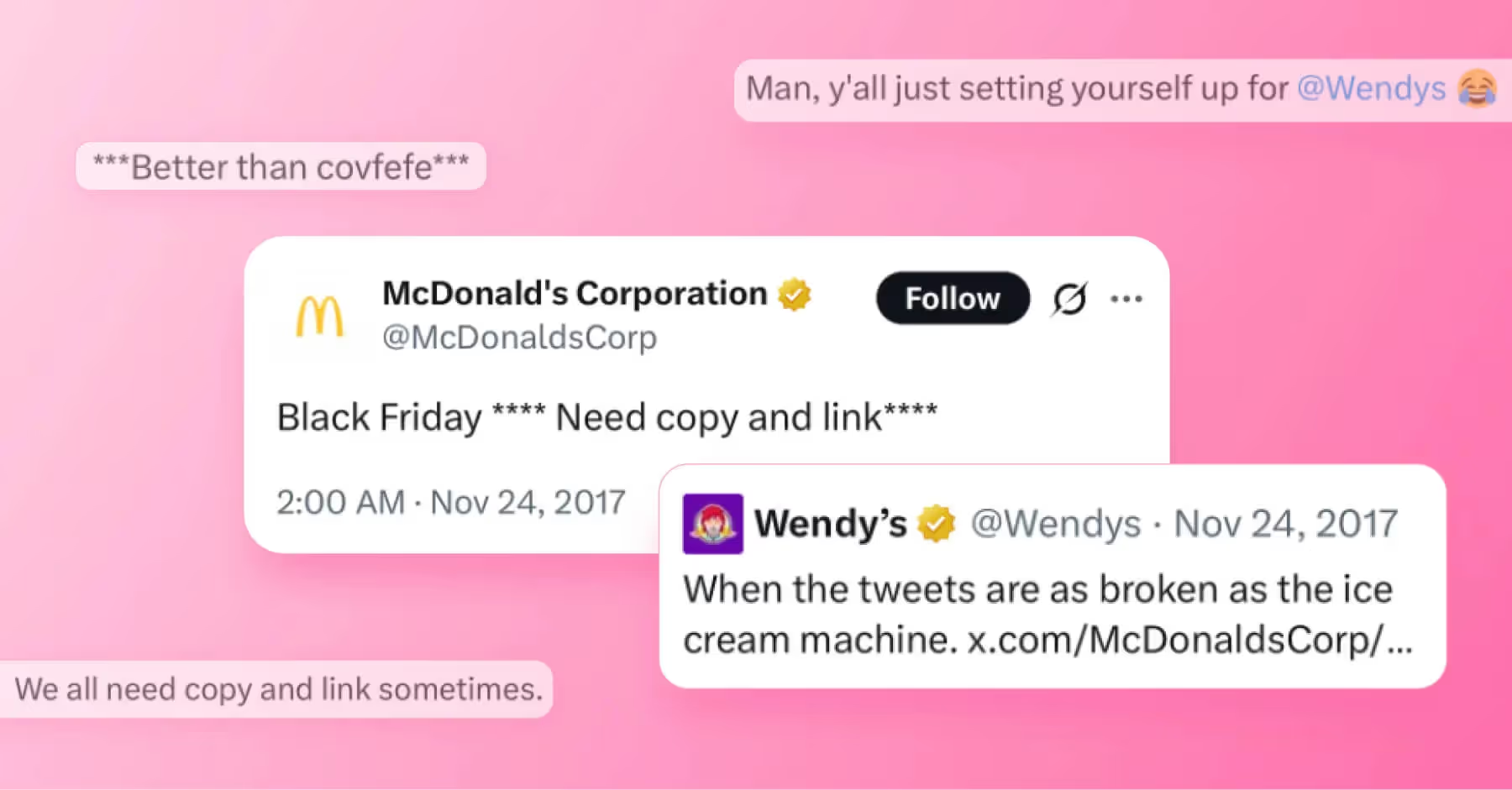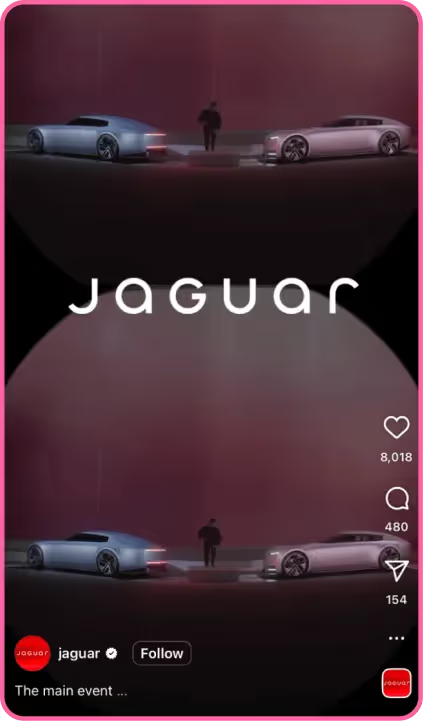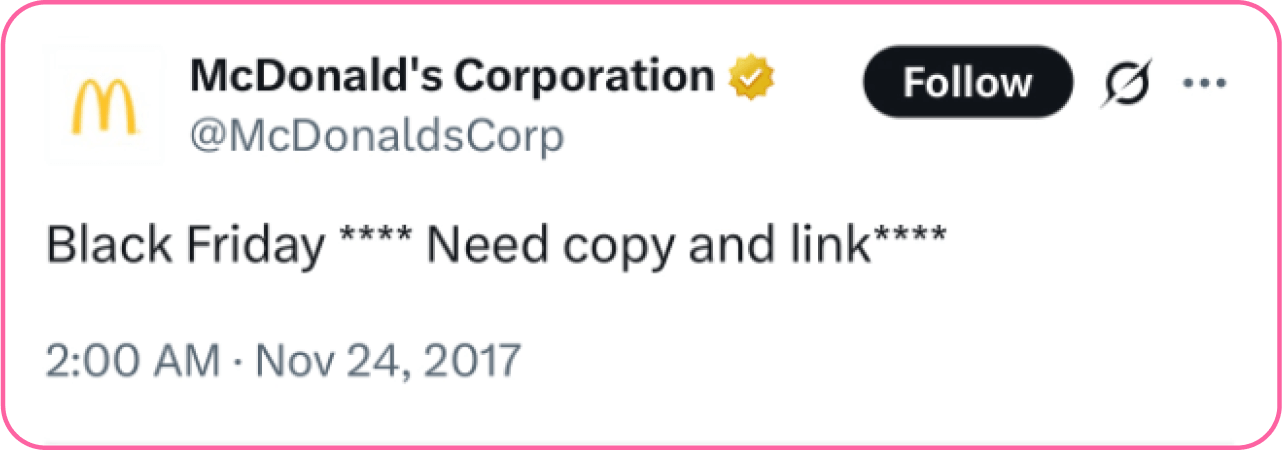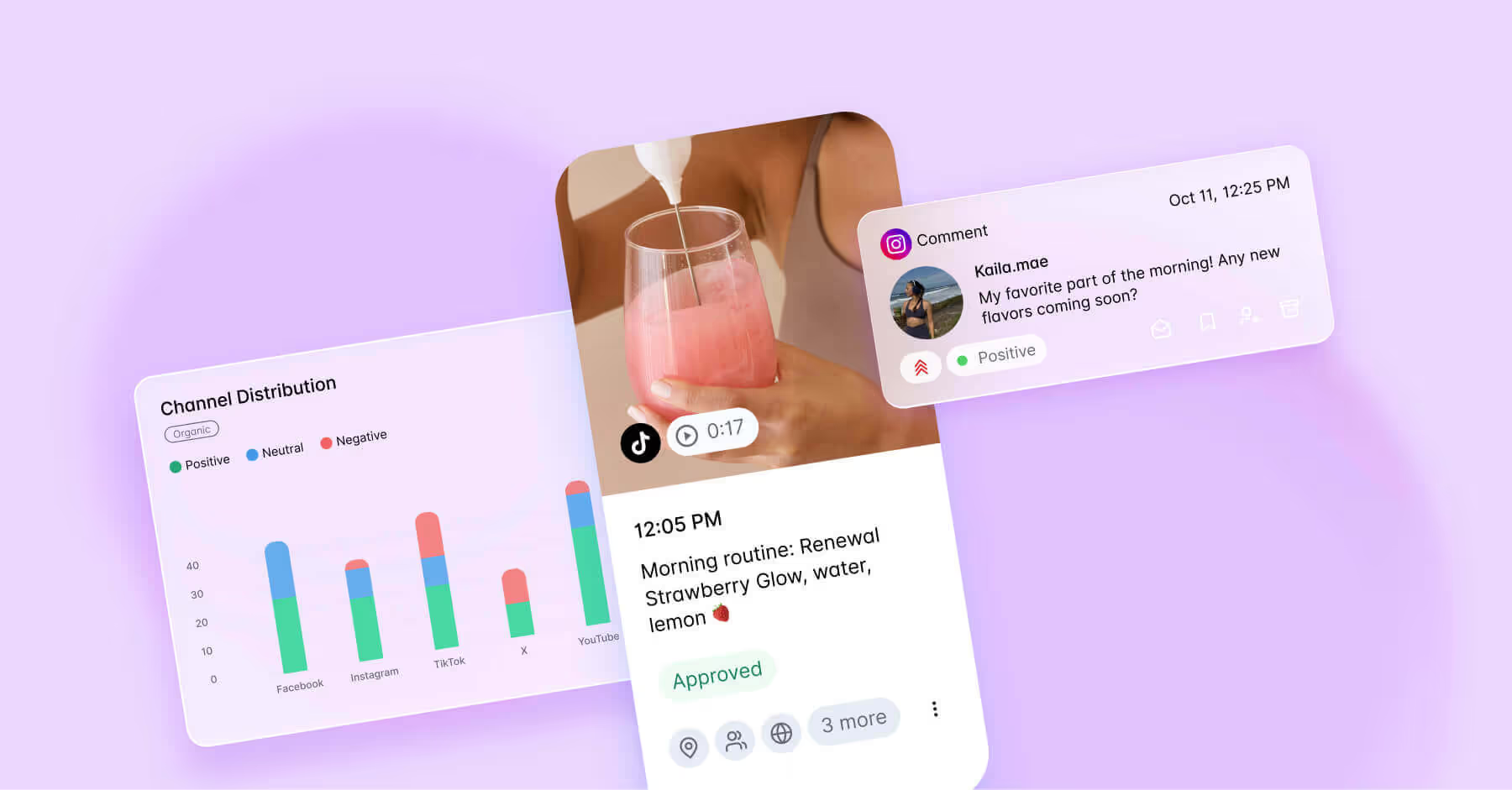Brand Survival Guide to Social Media Trolling
Trolls love chaos — your brand doesn’t. Explore tips to keep your community safe and on brand.

Picture this: Your day is almost over, you have the perfect matcha on the go and your favorite podcast is coursing through your headphones — until you check your Dash account and find a flurry of negative sentiment rolling in. There’s no company controversy and your content calendar is running smoothly, so what gives? Perhaps the most predictable, yet dreaded answer, is a social media troll.
But don’t panic; social media trolling is an unfortunate aspect of social media management that every marketer deals with. Without the right tips, it can be challenging to navigate with the perfect balance of earnestness, humor and de-escalation.
In this blog, we break down social media trolling from a brand perspective and teach brands exactly how to engage with trolls on social media.
TL;DR
- Trolls thrive on attention: Know the difference between genuine feedback and provocation before replying.
- When in doubt, don’t engage: Silence can protect your brand better than a rushed response.
- Your response plan matters: Build a flexible framework that covers tone, roles and when to escalate.
- Monitoring tools can help you stay ahead: Track negative sentiment, keyword spikes and repeat offenders
- Lean into your brand voice: Whether it’s humor or earnestness, consistency helps your responses land.
What Is Trolling on Social Media?
Social media trolling is when users post provocative, offensive, disruptive and sometimes just silly comments or content on social media. What separates a troll from a user providing genuine criticism? Social media trolling is all about the reaction — trolls often target brands, popular influencers or communities to elicit emotional responses, attract attention, start arguments or derail conversations.
Genuine criticism does often comes from a place of frustration, but is generally about finding some sort of resolution, like getting a store to change harmful policies, receiving compensation for a less-than-pleasant experience or just trying to educate others about a negative experience.
Trolling, however, is not done in good faith, and there’s not necessarily a possible resolution in mind. Here are some common examples of social media trolling to help you separate critique from cruelty:
- Bullying: Targeting individuals with repeated, aggressive or harmful messages.
- Sharing false information: Spreading misleading or fake content to confuse or provoke.
- Hate speech: Using offensive language aimed at a person or group based on race, gender, religion or identity.
- Sockpuppeting: Creating fake accounts to deceive, manipulate conversations or back up their own arguments.
- Name-calling: Using insults or derogatory labels to mock or belittle others.
Trolling can harm brand reputations, disrupt online communities and negatively affect mental health, which is why moderation and clear community guidelines are essential.
Recognizing When to Engage vs. Ignore
Parsing out trolls from honest feedback can seem challenging, but there are some key factors to look at to help your team distinguish between genuine feedback and troll behavior.
Is It a Troll or Genuine Criticism?
Before you reply, ask yourself — what’s the intent behind this comment? Does it raise a real concern or offer clear, constructive feedback? Or is it simply meant to provoke? Trolls often use sarcasm, name-calling or other types of written or verbal attacks. Real customers typically express dissatisfaction with specific experiences or issues. Mistaking one for the other can lead to overreactions or missed opportunities to build trust and right a (potential) wrong.
Visibility and Virality
A rude comment on a quiet post might be easy to ignore. But if that same comment appears on a high-engagement thread, your audience is watching. If people are liking, replying or resharing the thread, silence might be read as indifference. In those cases, a calm, strategic response can help take control of the tone, clarify misinformation and show your team is paying attention.
Consider the Context and Tone
Timing and topic matter. Did the comment come in response to a serious announcement or a lighthearted post? Is it connected to a larger conversation, or completely off-topic? A sarcastic remark on a heartfelt brand story may not deserve airtime. But critical feedback during a product launch might be worth addressing. Take a beat, read the tone and assess the potential impact before deciding to reply.
Evaluate Brand Voice and Risk Tolerance
Not every brand handles trolls the same way — and that’s OK. Some brand identities thrive with a bold, clapback-heavy tone that plays well with their audience. Others stick to polished, helpful replies that align with a more formal brand voice. And for some, silence is the most strategic move. The right response depends on your brand’s personality, your comfort level with risk and how authentic the reply feels to your brand. If a cheeky reply might spark more harm than humor, it’s better to hold back. The only thing worse to your audience than a troll is an out-of-touch response.
When Silence Speaks Louder
Sometimes, not responding is the best way to de-escalate. Trolls often post for attention and replying gives them exactly what they want. Constantly responding to each critic can make your own brand seem defensive, petty or worse, unprofessional. Silence, on the other hand, can protect your brand’s tone, keep your feed clean and signal that not every negative comment deserves your energy. Simply put, choose your battles wisely.
Tips for Responding to Social Media Trolls
Responding to social media trolls can seem daunting, but don’t be afraid to ‘open a can of worms’. When done right, a great response can even bring your socials positive attention and engagement. So take a beat, breathe and keep these tips in mind before hastily responding to trolls.
Lean into Humor
Depending on the troll and type of content, leaning into humor can be a great way to deal with trolls and even enhance brand loyalty. This response makes other users laugh and shows you can be ‘in on the joke’. Some audiences even come to expect it from brands — think of Wendy’s online voice. While this approach isn’t right for every brand, audiences often expect a witty, funny reply from the brand.
Don’t Engage
Sometimes, the best response is no response. If you receive multiple trolling comments each day, responding is not a valuable use of your time. This can easily make your brand veer into ‘petty’ territory, which is not necessarily a brand image most want to cultivate. If a comment is hateful or breaks a platform’s community guidelines, it’s best to report it, especially if it contains bigoted, hateful or harmful information. You can also take direct action by deleting Instagram comments that don’t align with your brand’s values to keep your feed clean.
Trolls, criticism and critique are part of being a visible brand on social media, so if your response doesn’t fit your brand voice, it can’t be resolved in the DMs or it’s reported and removed, it’s often best to leave it be.
Monitor Social Presence
Monitoring your comments section, DMs and even other online forums like Reddit or Google My Business are a great way to stay aware and ahead of negativity. Social listening tools or social media monitoring tools can help your team surface troll comments quickly by setting up relevant keywords to monitor, gauging negative sentiment, flagging spikes in unusual activity and identifying repeat offenders or suspicious account patterns — your troll could even be a fake follower, like a bot.
Reply When Appropriate
Like we discuss above, not every trolling comment deserves a response. If a funny, witty comment deserves a response, so tread carefully. A successful response should feel intentional, aligned with your brand voice and unlikely to escalate the situation. If your brand leans casual, snappy or witty replies might resonate with your audience. If your tone is more polished or corporate, a simple clarification or redirect might be a better fit.
Replying is about strategy, not impulse. Use it when the comment gives you a chance to reinforce your values, clarify facts or inject personality.
Develop a Response Plan
Before you develop a response plan, it’s important to remember you can filter out specific phrases and words from your profile. Platforms like Facebook have a profanity filter that automatically removes profane comments and also lets teams hide comments that contain certain keywords, phrases and even emojis from appearing.
Beyond this, developing a response plan will give your team guidelines to know what type of action to take. You might want to include some response examples, but if it’s right for your brand, try to not rely too much on canned responses, or build in some wiggle room so you can personalize your replies. If you’re constantly running into feedback and using a generic response, audiences might not feel heard or respected — especially if you’re posting these responses to the comment sections where everyone can see.
Your brand reputation response plan should include:
- Channels: How will you respond on social media versus a chat bot? If escalation is necessary (which it often is for serious concerns), which team handles the conversation? Will you push certain comments to a real person? How long does your team aim to resolve an issue? Answers to these questions provide a framework to not let important conversations get out of hand.
- Examples: Genuine feedback and trolling will have different looks and feels. Including some examples of potential comments and related responses can help your social and communications teams determine how to differentiate between and respond to a variety of comments. For example, an angry customer could send a DM your team might flag as trolling, however, it contains genuine feedback. Having some examples of comments and which type of reply is appropriate can remove the guesswork from crafting a great reply.
- Execution: Once you send your reply, it’s important to monitor the situation. Your reply isn’t necessarily the end of the issue. If it’s a troll, you might not want to go back-and-forth with them, but if it’s a more serious issue, you’ll want to monitor the situation. Do you send out a survey to gauge customer satisfaction? Do you consider a quick ‘yes or no’ question in a chat as confirmation the issue is resolved? For troll comments, do you continue to monitor post sentiment or user activity to see if things escalate?
How To Build a Trolling Response Plan in 5 Steps
Responding to trolls should feel human, not like a copy-paste job from a crisis handbook. But that doesn’t mean winging it. Without clear guardrails, even the most well-meaning reply can spiral into a messy thread you didn’t ask for. A solid plan helps your team stay consistent, calm and totally unbothered. Here’s how to build one.
1. Define What Types of Comments To Respond To
Not every negative comment is a troll, and not every troll deserves your energy. Start by aligning your team on the difference between legit feedback and chaos for chaos’ sake. If the comment is vague, overly sarcastic or meant to provoke, odds are it’s not worth it. Setting a clear definition helps you avoid flippant replies or getting defensive in public, which can easily backfire.
2. Create a Response Decision Tree
A simple flowchart can save a lot of time (and back-and-forth Slacks). Build a decision tree that walks your team through what to do based on the type of comment, who it’s coming from and how visible it is. Does it violate community guidelines? Has the user done this before? Is the post gaining traction? Use clear logic to guide decisions like replying, hiding, escalating or blocking.
3. Establish Brand Voice Parameters
Are you the cheeky clapback brand or the calm and collected one? Your response voice should match your brand, not mimic someone else’s. Some brands win with snappy one-liners, while others stick to helpful and polished responses. Pick your lane and stick with it, since switching up your tone can confuse audiences.
4. Designate Roles and Escalation Paths
Make sure everyone knows who’s doing what. Assign team members to monitor comments, craft replies and flag anything that needs to be escalated. Some posts may call for a formal PR strategy, especially they touch on sensitive topics or carry potential risk to your reputation. Clear roles and paths to escalation that include things like when to involve your legal team, PR team or customer support, help your team respond confidently and quickly.
5. Review and Update Regularly
Trolling tactics change, platforms shift and what worked last year might feel out of touch now. Set a schedule to review your plan quarterly or bi-yearly. Use real interactions as examples to refine tone, workflow and tool usage. Think of it like spring cleaning, but for your moderation and social media strategy.
Examples of Trolling on Social Media
Even the biggest brands fall victim to trolls. Here are some examples of brand encounters with trolls, how they handled it and what you can take away to navigate your own trolls with ease.
Coca-Cola’s AI Advertisement
In 2024, Coca-Cola leaned into artificial intelligence to produce its annual holiday ad, a high-concept, visually glossy campaign titled ‘create real magic’. Visually, the overall tone held similarities to past campaigns: cozy and extremely festive. However, critics and commenters pushed back, claiming it felt cold, impersonal and disconnected from the emotional warmth Coca-Cola’s holiday advertisements are known for. Some even accused the brand of jumping on the AI bandwagon without considering its implications.

Coca-Cola’s response: The brand didn’t engage directly with individual troll comments. Instead, it stuck to high-level messaging focused on its commitment to creativity and innovation, while continuing to promote the campaign through polished, emotionally driven content. They avoided going defensive or overly explaining, and instead shifted focus to promote the collaboration between human storytelling and AI.
Brand takeaway: You don’t always need to defend every decision. If your intent was clear and your campaign aligns with brand values, sometimes the right response is to double down on the positive and keep the conversation moving forward. Let trolls talk and let your audience decide for themselves. It’s also important to note that Coca-Cola is a massive brand with huge influence, and its advertisements aim to foster its brand image and promote warm, happy feelings associated with their beverage. Simply put, a huge brand like Coca-Cola can afford to take some risks that might not be worth the consequences and hit to their reputation for smaller brands.
Jaguar’s Rebranding
Jaguar rolled out a sleek new visual identity as part of its shift to an all-electric future in 2024. The refreshed logo and minimalist design sparked some serious trolling online, with comments calling it “bland”, “boring” and perhaps the worst, a “PowerPoint placeholder”. Instagram comments lit up with comparisons to other luxury brands and sarcastic takes.

Jaguar’s response: Jaguar took the high road. Rather than clapping back, they leaned into storytelling, posting visually-bold content that ties their new logo into the future of the company, not the past. They focused on using an aspirational, not apologetic tone. Their confident reply helped reduce negative chatter and shifted the conversation from design critiques to the bigger-picture for the brand.
Brand takeaway: Stay focused on the long game, and don’t be afraid to lean into the story behind your brand decisions. Rebrands are often controversial, and that’s okay. Focus messaging on your future vision, and remember, a few loud comments don’t define your success — especially if they’re not coming from your target audience.
McDonalds Black Friday Blunder
Despite being a bit old, this example from fast food brand McDonald’s shows that even the biggest brands make mistakes; and can recover from them. In 2017, on Black Friday, they accidentally published a drafted X post that read ‘Black Friday Need copy and link”. The tweet went viral, not for the content or for any Black Friday offer, but for the mistake itself, with many users poking fun at the brand.

McDonald’s response: McDonald’s took the opportunity to respond with humor and smoothly plug their McCafé offerings at the same time.
Brand takeaway: Mistakes happen. When they do, humor and humility go a long way. A quick, on-brand recovery tweet can turn a troll-worthy blunder into a likable moment of relatability. Don’t overthink it; own it and move on.
Social Media Trolling FAQs
What’s the meaning of social media trolling?
Social media trolling is the act of intentionally posting provocative, offensive or disruptive content online with the goal of creating conflict, attracting attention or derailing conversations. Trolls often target individuals, brands or communities with sarcasm, name-calling or misinformation to provoke brands or other users. It’s less about offering feedback or seeking a genuine resolution to an issue, and ultimately about getting a rise out of others.
How can you tell if someone is trolling you?
You can usually tell someone is trolling when their comment lacks genuine insight, seems designed to provoke or is overly aggressive without context. Trolls often repeat themselves, use exaggerated or mocking language and ignore clarifications or attempts at dialogue. If a user continually shifts the conversation, escalates tension or responds with sarcasm rather than solutions, it’s a strong sign you’re dealing with a troll.





